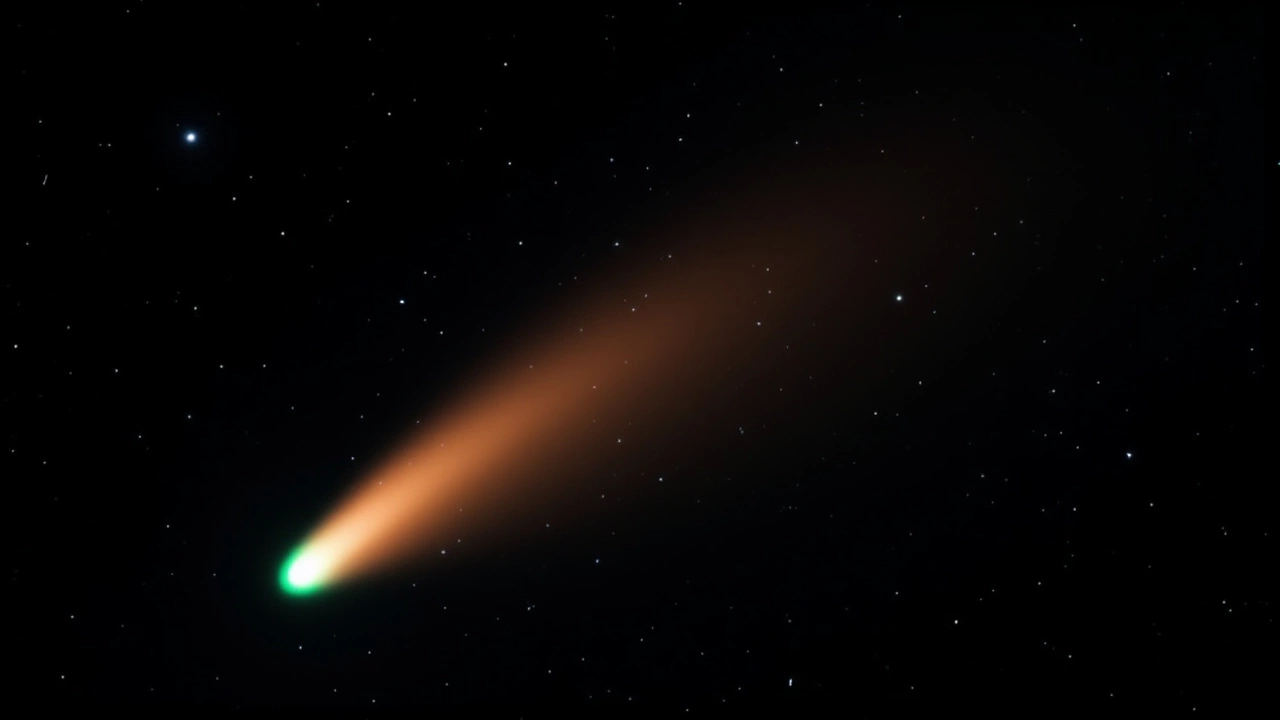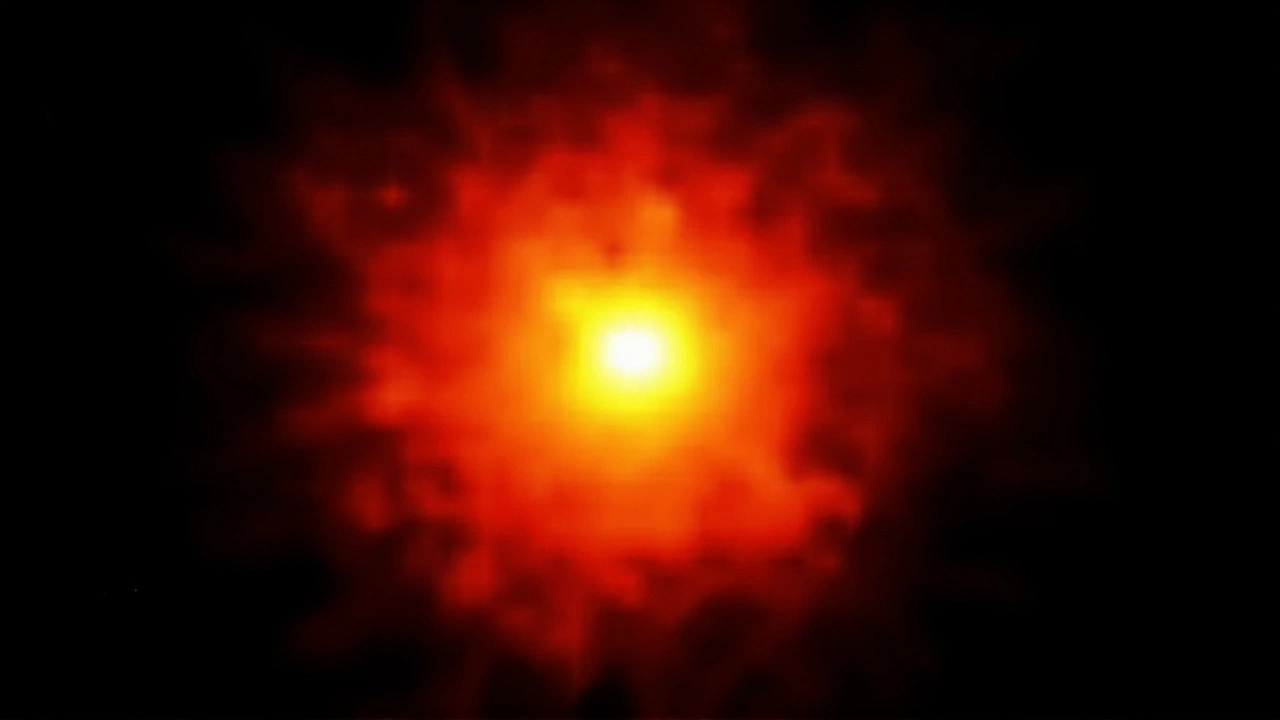When 3I/ATLAS first flashed in ATLAS imagery on July 1, 2023, a wave of excitement rippled through the astronomical community. The object’s hyper‑fast speed and icy glow hinted at something familiar yet alien – a comet that didn’t belong to our Sun’s family. interstellar comet turned out to be the most accurate, non‑speculative label, as scientists at NASA and partner observatories quickly marshaled data to debunk the more sensational alien‑craft theories.
Historical context: Our growing catalog of visitors
Since the surprise appearance of 1I/‘Oumuamua in 2017, astronomers have been on high alert for objects that swing through the solar system on open, hyperbolic trajectories. The second confirmed interstellar traveler, 2I/Borisov, arrived in 2019 and behaved like a textbook comet, complete with a bright tail and an icy nucleus. ATLAS (the Asteroid Terrestrial-impact Last Alert System) added a third entry to that exclusive list with 3I/ATLAS, reinforcing the idea that such wanderers are not one‑off curiosities but a class of objects worth tracking.
Detailed developments: Observations that settled the debate
Radar and optical measurements from a network that includes the Nordic Optical Telescope in the Canary Islands showed the object hurtling at roughly 137,000 mph (221,000 km/h) – far beyond the solar system’s escape velocity. Its trajectory, plotted by NASA’s Jet Propulsion Laboratory, is unmistakably hyperbolic, meaning the Sun’s gravity cannot capture it. In addition, spectroscopic data revealed water‑ice sublimation and a diffuse coma, classic signs of an active comet rather than a metallic spacecraft.
One of the few lingering questions came from Avi Loeb, a Harvard University astronomer known for advocating unconventional interpretations of interstellar objects. Loeb suggested that the sudden change in the tail’s direction could be a deliberate maneuver, akin to a craft braking near Mars. However, most of his peers pointed out that an "anti‑tail" – a dust feature that points sunward – is a well‑documented cometary phenomenon, observed in dozens of solar system comets over decades.
Responses from the scientific community
NASA’s planetary science division released a statement emphasizing that every observed characteristic of 3I/ATLAS aligns with established comet physics. "The object’s speed, trajectory, and cometary activity are all consistent with a natural interstellar origin," the agency wrote. In parallel, the International Astronomical Union hosted a rapid‑response symposium where experts from European Southern Observatory, Japan’s Subaru Telescope, and the University of Arizona converged to compare notes. The consensus was clear: no credible evidence supports an artificial origin.
Impact assessment and expert analysis
Beyond quelling the extraterrestrial‑craft hype, 3I/ATLAS offers a rare glimpse into the composition of other planetary systems. Its spectral fingerprint shows a mix of carbon‑rich organics and silicate grains, hinting that the building blocks of life may be common across the galaxy. Dr. Maya Patel, a comet specialist at the Space Telescope Science Institute, notes that each interstellar visitor enriches our models of planet formation beyond the Sun’s neighborhood.
The object’s path also presented a logistical challenge: on October 21, 2023, it reached perihelion – the closest point to the Sun – while aligning directly behind the Sun from Earth’s viewpoint, a configuration known as solar conjunction. This blackout meant ground‑based telescopes were blind for several days, but orbiters around Mars and the Jovian system kept a watchful eye, streaming data back to Earth.

Future implications and next steps
With 3I/ATLAS now on its way out of the solar system, the focus shifts to improving early‑detection capabilities. The ATLAS network plans to upgrade its cameras to capture fainter objects, while missions like the upcoming Comet Interceptor are being designed to rendezvous with future interstellar visitors on the fly.
For now, the story of 3I/ATLAS serves as a reminder that while the cosmos can inspire wild speculation, rigorous observation and peer review remain the bedrock of scientific truth.
Key Facts
- Discovery date: July 1, 2023 by ATLAS
- Speed at discovery: ~137,000 mph (61 km/s)
- Trajectory: Hyperbolic, unbound to the Sun
- Classification: Active comet with icy nucleus and coma
- Perihelion and solar conjunction: October 21, 2023
Frequently Asked Questions
What makes scientists confident 3I/ATLAS is a natural comet?
Its hyperbolic orbit, measured speed, and the presence of an icy coma match every known comet signature. Spectroscopy shows water‑ice sublimation, and the so‑called anti‑tail is a regular cometary effect, not a sign of engineering.
How did Avi Loeb’s alien‑craft hypothesis arise?
Loeb focused on a brief change in the comet’s tail direction captured by the Nordic Optical Telescope. He interpreted it as a possible thrust maneuver, but most astronomers explained it as natural dust dynamics caused by solar radiation pressure.
Why was the object unobservable from Earth on October 21?
During solar conjunction the Sun sat directly between Earth and 3I/ATLAS, flooding any line‑of‑sight with sunlight. This alignment hides the object from ground‑based telescopes, though spacecraft at Mars and Jupiter could still view it from different angles.
What does 3I/ATLAS tell us about other planetary systems?
Its composition—rich in organics and silicates—mirrors that of comets formed around other stars, suggesting that the raw ingredients for life are widespread. Each interstellar visitor refines models of how planetary disks evolve beyond our own.
